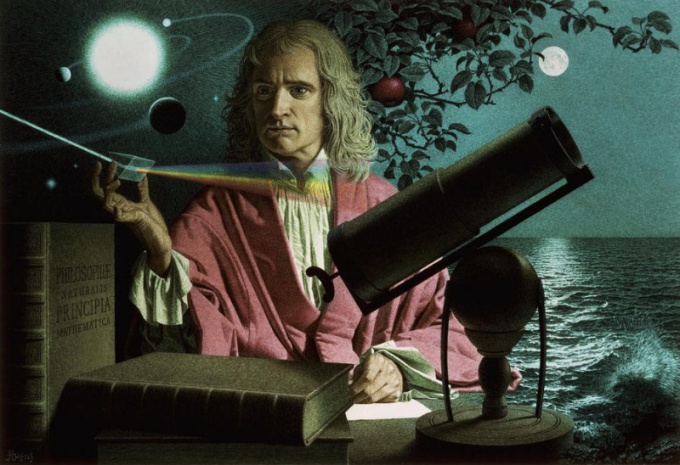Newton became famous for his works not only in physics but also in psychology, philosophy, mathematics and astronomy.
Throughout his life Newton worked on the formation of the so-called physical picture of the World, and that these writings were destined to become the greatest discovery of the basic physics. Many scientists agree that since the creation of the Newton laws of mechanics, the reference point of the history of physics and modern natural Sciences in General.
Newton's first law (law of inertia).
The first law States that every body continues in state of rest or uniform and rectilinear movement, while and as it is not ponuguese applied forces to change this state.
The essence of the law laid out in the 16th century Galileo Galilei, but Newton is more deeply considered the concept of movement from all points of view (including with philosophically in his treatise "the Mathematical principles of natural philosophy").
One day when the scientist sat in the garden under a tree, next to him, dropped the Apple. "Why do apples always fall perpendicularly to the ground?" he thought. According to the legend, opened the law of universal gravitation.
Newton's second law (fundamental law of dynamics).
The second law States that the change of momentum is proportional to the driving force and goes in the direction of the straight line in which that force acts.
In more simple words, the acceleration acquired by a body is directly proportional to the resultant force and inversely proportional to the mass of the body. The acceleration in this case is directed in the direction of the force acting on a material point.
Newton's third law (law of interaction of the bodies).
Any action has a corresponding reaction - words are known to everyone. This is Newton's third law. In any interaction between two bodies, forces acting on both bodies.
The third law States that for every action there is an equal and opposite reaction, otherwise, the interaction of two bodies on each other are equal and aimed in opposite directions.
